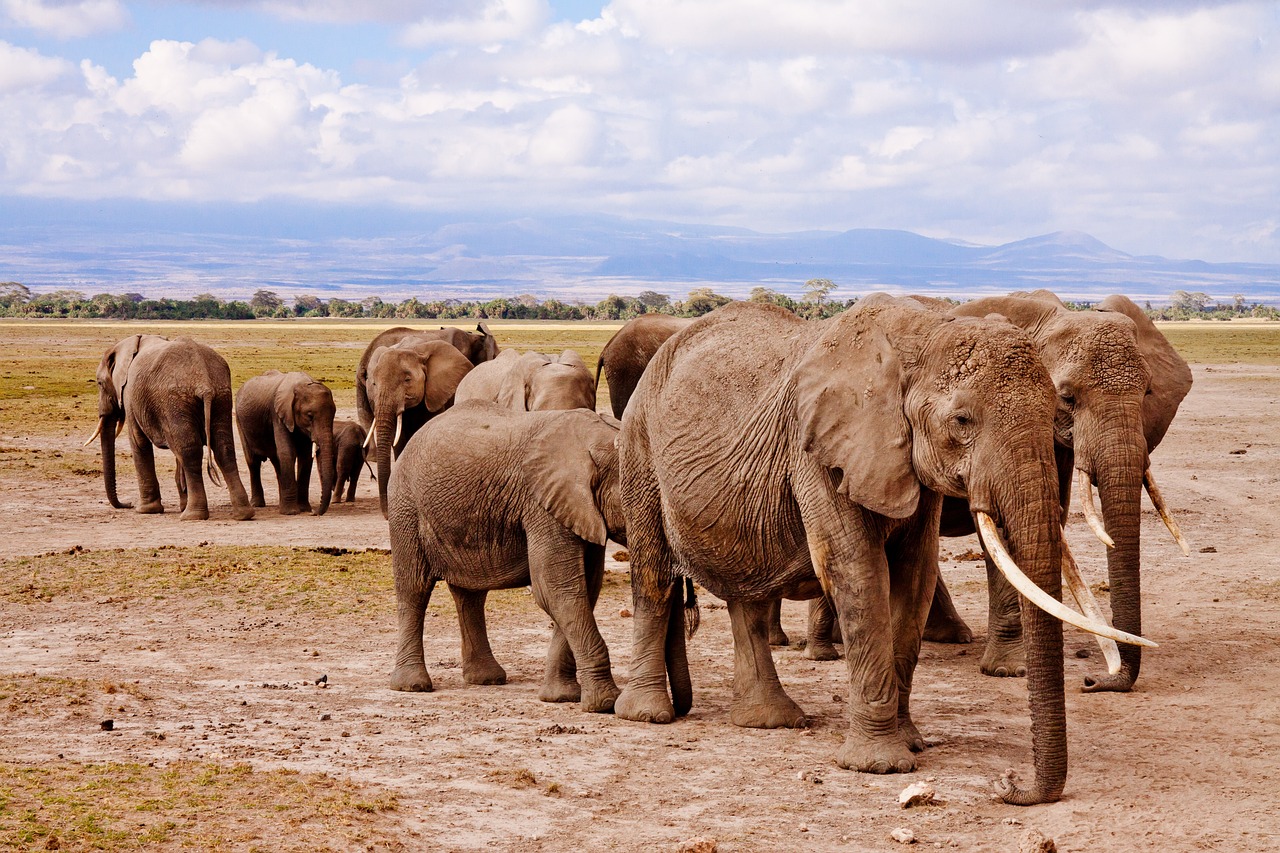Elephants, the largest land animals on Earth, have long captured the awe and admiration of people around the world. With their immense size, remarkable intelligence, and complex social structures, they are among the most fascinating creatures in the animal kingdom.
Table of Contents
Scientific Name
The scientific name for elephants is Elephantidae. This name comes from the Greek words Elephas, meaning “ivory”, and id, meaning “tooth”.
Types of Elephants
The three species of elephants exhibit differences in size, shape of ears, tusks, and habitat preferences. African bush elephants are the largest, with long, straight tusks and ears shaped like the African continent. African forest elephants are smaller and more elusive, inhabiting dense rainforests. Asian elephants have smaller ears, curved tusks, and a broader forehead, and they can be found in various Asian countries.
Evolution
Elephants have an ancient and storied evolutionary history that dates back millions of years. Their ancestors were much smaller and roamed the Earth during the prehistoric era. Over time, they evolved into the majestic giants we know today, developing unique adaptations to thrive in their environments.
Behavior and Social Structure
Elephants are known for their strong family bonds and complex social structures. They live in matriarchal herds, led by the oldest and wisest female. These herds consist of mothers, daughters, sisters, and their offspring. Male elephants typically lead more solitary lives or form small bachelor groups until they are ready to mate.
Habitat and Range
Elephants inhabit a range of habitats, including savannas, forests, and grasslands. African elephants can be found in a wide range of African countries, from the vast plains of the Serengeti to the dense forests of central Africa. Asian elephants are distributed across countries in South and Southeast Asia, such as India, Thailand, and Sri Lanka.
Diet and Feeding Habits
Elephants are herbivores, meaning they eat only plants. They have a voracious appetite and can consume hundreds of pounds of vegetation each day. Their diet includes grass, leaves, fruits, bark, and roots. Elephants use their strong trunks to gather food, and their powerful molars grind the tough plant material.
Predators and Threats
In their natural habitats, elephants have few predators due to their enormous size and protective herds. However, young elephants may fall prey to large carnivores like lions and crocodiles. The most significant threat to elephant populations today is human activity, including poaching for ivory, habitat destruction, and human-wildlife conflict.
Reproduction and Family Life
Elephants have a slow reproductive rate, and females typically give birth to a single calf after a gestation period of nearly two years. The birth of a new calf is a joyous occasion for the entire herd, and the young elephants receive care and protection from the entire matriarchal group.
Population and Conservation
Conservation efforts are crucial for the survival of these majestic giants. Elephants are listed as vulnerable or endangered species due to the ongoing threats they face. Numerous organizations and governments are working tirelessly to protect their habitats, curb illegal poaching, and promote sustainable coexistence between elephants and human communities.
FAQs
Q: How much can an elephant weigh?
A: African elephants can weigh between 5,000 to 14,000 pounds, while Asian elephants typically weigh between 4,500 to 11,000 pounds.
Q: Can elephants swim?
A: Yes, elephants are excellent swimmers. They use their trunks as snorkels and can cross rivers and lakes with ease.
Q: What is the significance of an elephant’s trunk?
A: An elephant’s trunk is a versatile tool used for breathing, drinking, feeding, social interactions, and even as a powerful weapon for self-defense.
Q: How intelligent are elephants?
A: Elephants are highly intelligent animals with complex emotions and problem-solving abilities. They have demonstrated a strong sense of empathy and self-awareness.
Q: Are elephants used in the tourism industry ethical?
A: The use of elephants in the tourism industry can raise ethical concerns, especially when it involves exploitation and cruelty. Responsible and ethical wildlife tourism focuses on observing elephants in their natural habitats without causing harm.
Conclusion
Elephants stand as a testament to the magnificence and resilience of the natural world. These majestic giants command both respect and wonder, and their presence in our ecosystems is essential for maintaining balance and biodiversity. As we strive to protect and conserve these incredible creatures, we ensure that future generations can continue to marvel at the grace and grandeur of these iconic beings.
